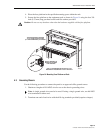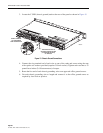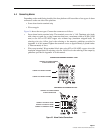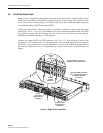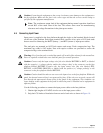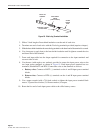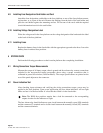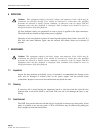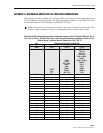
ADCP-80-526 • Issue 6 • December 2006
Page 28
© 2006, ADC Telecommunications, Inc.
6 OPERATION
All fuse platform circuits are operational as soon as power is applied to the input connectors.
The alarm indicator should not light when power is applied.
Operation of the fuse platform consists of removing and replacing fuses when a fuse fails. If a
fuse fails, the alarm indicator lights, and the external and remote alarms are activated (if
present).
7 MAINTENANCE
7.1 Inspection
Inspect the fuse platform periodically (every six months is recommended) for damage to the
fuses and for damaged or broken wires on the power outputs and the external alarm
connections. Inspect for excessive dust and dirt that may block the vents.
7.2 Cleaning
If excessive dirt is found during the inspection, brush or wipe dust and dirt from the fuse
platform with a soft bristle brush or soft cloth. Take care not to not damage the fuses or any
wiring.
7.3 Fuse Removal
The GMT fuses can be removed with the aid of a wire hook or tweezers-type fuse puller. A fuse
puller is available as an accessory item. A TPA or KLM fuse may be removed by pulling the
fuses straight out from the fuse holders.
Caution: This equipment employs electrical voltage and amperage levels which may be
considered an electrical hazard. Care should be exercised to assure that only qualified
personnel are allowed to install, operate, maintain, or otherwise come in contact with this
equipment when the fuse platform is energized. Only insulated tools should be used on
energized elements of the fuse platform.
Caution: This equipment employs electrical voltage and amperage levels which may be
considered an electrical hazard. Care should be exercised to assure that only qualified
personnel are allowed to install, operate, maintain, or otherwise come in contact with this
equipment when the fuse platform is energized. Only insulated tools should be used on
energized elements of the fuse platform.



